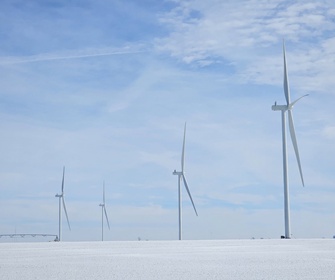Despite the ongoing growth expected in global wind power installed capacity, wind turbine manufacturers have several major hurdles to overcome if they are to thrive in a challenging and highly competitive market, states Jennifer Santos, GlobalData’s Senior Energy Consultant.
The wind turbine market suffers from manufacturing overcapacity, falling subsidies, and uncertainty in some wind power sectors. Vestas’ announcement of its 2012 results brought mixed news, with the world’s largest wind turbine manufacturer anticipating weaker sales and revising shipment forecasts downwards as a result. Costs must be kept as low as possible. Cost-saving programmes initiated by Vestas last year, including rationalising its manufacturing base and reducing headcount, seem to have paid off and saw the company earning a positive cash flow in the fourth quarter of 2012. Similarly, revenues and operating profits before special items reached their highest level in the same quarter of last year. Gamesa expects to continue with its cost-cutting programme this year by closing more than a third of its offices and further reducing its debt. The USA and China – the dominant forces in the wind turbine production business – currently account for 60% of the global wind power market, but their potential for significant turbine manufacturer revenue generation seems slim. Although the Production Tax Credit (PTC) was extended for another year in the US, the lack of a long-term, subsidy-free approach will prevent the US wind power sector from fully taking off in 2013. China, on the other hand, is dominated by numerous local manufacturers who all want to take a piece of the pie. It looks as though turbine prices have bottomed out – at least for the leading manufacturers. A number of wind turbine manufacturers are developing new products which are arguably higher priced per MW than conventional wind turbines. If turbine manufacturers can drive down costs further in 2013, then a return to profitability is possible and prices at € 1 million per MW looks sustainable.
The wind turbine market suffers from manufacturing overcapacity, falling subsidies, and uncertainty in some wind power sectors. Vestas’ announcement of its 2012 results brought mixed news, with the world’s largest wind turbine manufacturer anticipating weaker sales and revising shipment forecasts downwards as a result. Costs must be kept as low as possible. Cost-saving programmes initiated by Vestas last year, including rationalising its manufacturing base and reducing headcount, seem to have paid off and saw the company earning a positive cash flow in the fourth quarter of 2012. Similarly, revenues and operating profits before special items reached their highest level in the same quarter of last year. Gamesa expects to continue with its cost-cutting programme this year by closing more than a third of its offices and further reducing its debt. The USA and China – the dominant forces in the wind turbine production business – currently account for 60% of the global wind power market, but their potential for significant turbine manufacturer revenue generation seems slim. Although the Production Tax Credit (PTC) was extended for another year in the US, the lack of a long-term, subsidy-free approach will prevent the US wind power sector from fully taking off in 2013. China, on the other hand, is dominated by numerous local manufacturers who all want to take a piece of the pie. It looks as though turbine prices have bottomed out – at least for the leading manufacturers. A number of wind turbine manufacturers are developing new products which are arguably higher priced per MW than conventional wind turbines. If turbine manufacturers can drive down costs further in 2013, then a return to profitability is possible and prices at € 1 million per MW looks sustainable.








